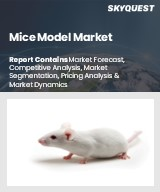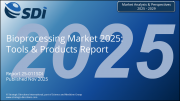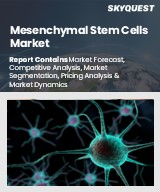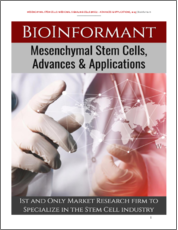
|
시장보고서
상품코드
1798030
세계의 자가면역성 피부 질환 치료 시장 : 예측 - 질환 유형별, 치료 유형별, 투여 경로별, 최종 사용자별, 지역별 분석(-2032년)Autoimmune Skin Diseases Treatment Market Forecasts to 2032 - Global Analysis By Disease Type, Therapy Type, Route of Administration, End User and By Geography |
||||||
Stratistics MRC에 따르면 세계의 자가면역성 피부 질환 치료 시장은 2025년에 100억 5,000만 달러로 추정되고, 예측 기간 동안 CAGR 14.4%로 성장할 전망이며, 2032년에는 257억 7,000만 달러에 이를 전망입니다.
피부의 자가면역성 질환 '치료'라는 용어는 면역계가 부주의하게 건강한 피부 세포를 표적으로 함으로써 발생하는 피부 질환을 치료하는 데 사용되는 의료 치료를 의미합니다. 건선, 백반, 홍반성 루푸스, 피부경화증, 천포창, 포진 피부염 등은 이러한 질병의 일부입니다. 치료의 주요 목표는 피부 손상을 최소화하고 염증을 억제하며 비정상적인 면역 반응을 억제하고 증상을 완화하며 재연을 피하는 것입니다. 전신과 국소 코르티코스테로이드, 면역억제제, 생물제제, 광선요법, 지지적 스킨케어 등이 일반적인 치료법입니다. 삶의 질 향상, 합병증 감소, 질병 진행 지연은 모두 조기 진단과 개별 환자에 맞는 치료 전략에 달려 있습니다.
자가면역 피부 질환 유병률 상승
스크리닝 개선과 인지도 향상으로 백반, 늑대, 건선과 같은 질병의 진단이 증가하고 있습니다. 헬스케어 전문가는 이러한 환자 기반의 확대를 받고, 표적 치료, 면역조절제, 첨단 생물제제를 채용하고 있습니다. 이러한 환자의 미충족 요구를 충족시키기 위해 제약 회사는 연구 개발 비용을 늘리고 있습니다. 또한 유리한 헬스케어 규제와 피부과 의료에 대한 접근성 향상으로 치료 도입률도 상승하고 있습니다. 자가면역 피부 질환의 유병률 증가는 시장의 꾸준한 확대를 뒷받침하고 있습니다.
생물 제제 및 고급 치료에 대한 고가의 비용
많은 환자들이 이러한 의약품의 대금을 지불할 수 없기 때문에 의약품에 대한 접근과 어드히어런스가 제한됩니다. 또한 고액의 비용은 보험사나 헬스케어 시스템에 부담을 줍니다. 그 결과 보험 적용이 제한되어 상환이 어려워집니다. 결과적으로 환자는 더 효과적인 선택을 택할 수 있습니다. 이러한 금전적 장애는 최첨단 치료의 보급을 방해하여 시장 성장을 제한하고 있습니다.
헬스케어 지출 및 진단 성장
최첨단 생물학적 제제와 중점 치료법의 사용을 촉진하는 보조금 증가는 환자의 결과를 향상시킵니다. 진단 능력의 진보는 보다 정확한 질병 분류와 조기 발견을 가능하게 합니다. 조기 및 정확한 진단으로 적시에 개입하면 질병 진행과 합병증이 지연됩니다. 도시 및 농촌 지역에서 치료에 대한 접근성을 향상시키는 것은 헬스케어 인프라의 발전에 의해 가능합니다. 이러한 요소들이 함께 자가면역성 피부질환의 치료에 대한 수요가 증가하고 시장이 성장하고 있습니다.
안전에 대한 우려 및 부작용
감염과 장기 장애와 같은 심각한 부작용의 위험은 많은 치료에 존재합니다. 이러한 건강 피해로 인해 환자는 치료를 피하거나 중단할 수 있습니다. 또한, 안전 프로파일이 약한 경우, 의사는 특정 약물을 추천하고 싶지 않을 수 있습니다. 그 결과 환자의 컴플라이언스와 시장 수용성이 저하됩니다. 따라서 유익한 의약품의 채용은 위험에 대한 두려움으로 인해 느리게 진행되지 않습니다.
COVID-19의 영향
COVID-19의 유행은 공급망을 혼란스럽게 하고 임상 검사를 지연시키며 의료시설에 대한 환자의 접근을 제한함으로써 자가면역 피부 질환 치료 시장에 큰 영향을 미쳤습니다. 봉쇄 및 헬스케어 자원의 재분배는 진단 및 치료 일정을 연기하고 환자의 결과에 영향을 미쳤습니다. 원격 의료의 도입이 가속되어 원격 진찰 및 배합 관리가 가능하게 되었습니다. 제약회사는 생산과 유통에 있어서 과제에 직면했지만, 동시에 선진적인 치료법의 개발에 주목도 높아졌습니다. 팬대믹 이후의 회복은 선택적 치료의 재개, 헬스케어 접근성 개선,자가 면역 피부 질환의 관리에 대한 의식 증가로 이어집니다.
예측 기간 동안 생물 제제 부문이 최대가 될 것으로 예상
생물학적 제제 부문은 근본적인 면역 기능 장애에 대처하는 표적 요법을 제공함으로써 예측 기간 동안 최대 시장 점유율을 차지할 것으로 예측됩니다. 이러한 치료는 전통적인 약물에 비해 높은 효능과 긴 관해 기간을 제공하고 환자 수요를 뒷받침합니다. 생물제제와 전달방법의 진보는 안전성과 편의성을 높이고 채용률을 높이고 있습니다. 건선 및 아토피 피부염과 같은 질병에 대한 새로운 생물 제제의 승인이 증가하고 치료 포트폴리오가 확대되고 있습니다. 헬스케어 제공업체와 환자 의식 증가는 생물 제제 시장 성장을 더욱 가속화하고 있습니다.
예측 기간 동안 CAGR이 가장 높을 것으로 예상되는 것은 재택 관리 부문입니다.
예측 기간 동안, 가정 간호 부문은 환자가 집에서 치료 및 모니터링에 편리하게 접근할 수 있기 때문에 빈번한 통원의 필요성이 감소하고, 가장 높은 성장률을 나타낼 것으로 예측됩니다. 또한 자체 투여 옵션 및 헬스케어 제공업체로부터의 원격 지도를 통해 더 나은 치료 어드히어런스를 지원합니다. 휴대 기기와 원격 의료의 진보는 재택 케어의 실현성을 높이고 있습니다. 전반적으로, 재택 관리는 환자의 결과를 개선하는 동시에 헬스케어 비용을 줄이고 시장 성장을 견인하고 있습니다.
최대 점유율을 차지하는 지역
예측 기간 동안 북미가 가장 큰 시장 점유율을 차지할 것으로 예상되지만, 이는 높은 질병 이환율, 정비된 의료 인프라, 왕성한 연구개발 자금이 배경에 있습니다. 특히 생물제제나 JAK 억제제를 중심으로 하는 선진적인 의약품과 유리한 상환 시책이 신규 치료법의 급속한 보급을 지원하고 있습니다. 규제 당국은 의약품 승인의 신속화 및 바이오 유사품에 대한 진입을 촉진하고 있습니다. AI에 의한 영상 진단과 멀티플렉스 분석 등 최첨단 진단 기술과 정밀의료 기술의 이용이 증가하고 있으며, 생명공학 기업과 학술기관과의 전략적 제휴에 의해 건선, 습진, 루푸스 등의 질병에 대한 치료법의 지속적인 혁신이 촉진되고 있습니다.
CAGR이 가장 높은 지역
예측 기간 동안 아시아태평양이 가장 높은 CAGR을 나타낼 것으로 예측됩니다. 이는 고령화, 도시화, 라이프스타일의 진화에 따른 자가면역 질환 이환율의 상승이 배경에 있습니다. 헬스케어 인프라에 대한 투자, 공공 보험 적용 확대, 제네릭 의약품 생산이 치료에 대한 접근을 강화합니다. 신기술로는 AI를 활용한 원격 피부과학, 모바일 진단, 초분광 영상, 개발 중 나노구조 국소 치료 등이 있습니다. 세계의 혁신 동향은 지역의 요구나 의료 격차에 맞는 진단약이나 정밀 치료의 확장 가능한 전개를 지원하는 세계 제약 기업과의 제휴별, 비용 효율적인 지역 특화형 솔루션을 중시하고 있습니다.
무료 맞춤형 서비스
이 보고서를 구독하는 고객은 다음 무료 맞춤설정 옵션 중 하나를 사용할 수 있습니다.
- 기업 프로파일
- 추가 시장 진출기업의 종합적 프로파일링(3개사까지)
- 주요 기업의 SWOT 분석(3개사까지)
- 지역 세분화
- 고객의 관심에 응한 주요국 시장 추정, 예측 및 CAGR(주 : 타당성 확인에 따름)
- 경쟁 벤치마킹
- 제품 포트폴리오, 지리적 존재, 전략적 제휴를 통한 주요 기업 벤치마킹
목차
제1장 주요 요약
제2장 서문
- 개요
- 이해관계자
- 조사 범위
- 조사 방법
- 데이터 마이닝
- 데이터 분석
- 데이터 검증
- 조사 접근
- 조사 자료
- 1차 조사 자료
- 2차 조사 자료
- 전제조건
제3장 시장 동향 분석
- 서문
- 성장 촉진요인
- 성장 억제요인
- 기회
- 위협
- 최종 사용자 분석
- 신흥 시장
- COVID-19의 영향
제4장 Porter's Five Forces 분석
- 공급기업의 협상력
- 구매자의 협상력
- 대체품의 위협
- 신규 참가업체의 위협
- 경쟁 기업간 경쟁 관계
제5장 세계의 자가면역성 피부질환 치료 시장 : 질환 유형별
- 서문
- 건선
- 아토피 피부염
- 백반
- 심상성 천포창
- 홍반성 루푸스
- 기타
제6장 세계의 자가면역성 피부질환 치료 시장 : 치료 유형별
- 서문
- 생물제제
- 코르티코스테로이드
- 면역억제제
- 저분자 의약품
- 기타
제7장 세계의 자가면역성 피부 질환 치료 시장 : 투여 경로별
- 서문
- 경구
- 주사
- 국소
제8장 세계의 자가면역성 피부질환 치료 시장 : 최종 사용자별
- 서문
- 병원
- 전문 클리닉
- 재택 케어
- 기타
제9장 세계의 자가면역성 피부질환 치료 시장 : 지역별
- 서문
- 북미
- 미국
- 캐나다
- 멕시코
- 유럽
- 독일
- 영국
- 이탈리아
- 프랑스
- 스페인
- 기타 유럽
- 아시아태평양
- 일본
- 중국
- 인도
- 호주
- 뉴질랜드
- 한국
- 기타 아시아태평양
- 남미
- 아르헨티나
- 브라질
- 칠레
- 기타 남미
- 중동 및 아프리카
- 사우디아라비아
- 아랍에미리트(UAE)
- 카타르
- 남아프리카
- 기타 중동 및 아프리카
제10장 주요 개발
- 계약, 파트너십, 협업 및 합작투자
- 인수 및 합병
- 신제품 발매
- 사업 확대
- 기타 주요 전략
제11장 기업 프로파일링
- AbbVie Inc.
- Amgen Inc.
- Eli Lilly and Company
- Johnson & Johnson Services, Inc.
- Novartis AG
- Pfizer Inc.
- Bristol Myers Squibb Company
- Biogen Inc.
- Sanofi SA
- UCB SA
- GlaxoSmithKline plc
- Regeneron Pharmaceuticals, Inc.
- AstraZeneca plc
- Merck & Co., Inc.
- Takeda Pharmaceutical Company Limited
- Roche Holding AG
- Horizon Therapeutics plc
- Incyte Corporation
According to Stratistics MRC, the Global Autoimmune Skin Diseases Treatment Market is accounted for $10.05 billion in 2025 and is expected to reach $25.77 billion by 2032 growing at a CAGR of 14.4% during the forecast period. Autoimmune Conditions of the Skin the term "treatment" describes the medical procedures used to treat skin conditions brought on by the immune system inadvertently targeting healthy skin cells. Psoriasis, vitiligo, lupus erythematosus, scleroderma, pemphigus, and dermatitis herpetiformis are some of these ailments. The main goals of treatment are to minimise skin damage, reduce inflammation, inhibit aberrant immune responses, relieve symptoms, and avoid flare-ups. Systemic and topical corticosteroids, immune-suppressants, biologic treatments, phototherapy, and supportive skincare are common methods. Improving quality of life, decreasing complications, and delaying the progression of disease all depend on early diagnosis and individualized treatment strategies.
Market Dynamics:
Driver:
Rising prevalence of autoimmune skin conditions
Improved screening and more awareness have led to a rise in the diagnosis of conditions like vitiligo, lupus, and psoriasis. Healthcare professionals are adopting targeted treatments, immune-modulators, and sophisticated biologics as a result of this expanding patient base. To meet these patients' unmet requirements, pharmaceutical companies are increasing their research and development expenditures. Treatment adoption rates are also increased by favourable healthcare regulations and improved access to dermatological care. All things considered, the growing prevalence of autoimmune skin conditions drives steady market expansion.
Restraint:
High cost of biologic and advanced therapies
The inability of many patients to pay for these medicines restricts their access and adherence. High costs also put a strain on insurance companies and healthcare systems. This results in limited coverage and difficulties with reimbursement. Patients might choose less effective options as a result. These monetary obstacles hinder the uptake of cutting-edge treatments and limit market growth.
Opportunity:
Growth in healthcare expenditure and diagnostics
Patient outcomes are improved by increased funding, which encourages the use of cutting-edge biologics and focused treatments. More precise disease classification and earlier detection are made possible by advancements in diagnostic capabilities. Timely intervention by early and accurate diagnosis slows the progression and complications of disease. Increased access to treatment in both urban and rural areas is made possible by growing healthcare infrastructure. These elements work together to increase demand and grow the market for treatments for autoimmune skin conditions.
Threat:
Safety concerns and adverse effects
The danger of serious side effects, like infections or organ damage, is present with many treatments. These health hazards may cause patients to avoid or stop receiving therapy. Additionally, doctors can be reluctant to recommend particular medications if their safety profiles are weak. Patient compliance and market acceptance are lowered as a result. Therefore, the adoption of beneficial medicines is slowed by the fear of danger.
Covid-19 Impact:
The Covid-19 pandemic significantly influenced the Autoimmune Skin Diseases Treatment Market by disrupting supply chains, delaying clinical trials, and limiting patient access to healthcare facilities. Lockdowns and healthcare resource reallocation led to postponed diagnoses and treatment schedules, impacting patient outcomes. Telemedicine adoption accelerated, enabling remote consultations and prescription management. Pharmaceutical companies faced challenges in production and distribution but also saw increased focus on developing advanced therapies. Post-pandemic recovery is driven by resumed elective treatments, improved healthcare accessibility, and growing awareness of autoimmune skin disease management.
The biologics segment is expected to be the largest during the forecast period
The biologics segment is expected to account for the largest market share during the forecast period by offering targeted therapies that address the underlying immune system dysfunction. These treatments provide higher efficacy and longer remission periods compared to conventional drugs, boosting patient demand. Advancements in biologic formulations and delivery methods enhance safety and convenience, increasing adoption rates. Growing approvals of novel biologics for conditions like psoriasis and atopic dermatitis expand the treatment portfolio. Rising awareness among healthcare providers and patients further accelerates market growth for biologics.
The homecare settings segment is expected to have the highest CAGR during the forecast period
Over the forecast period, the homecare settings segment is predicted to witness the highest growth rate by offering patients convenient access to therapies and monitoring in their own homes, reducing the need for frequent hospital visits. It supports better treatment adherence through self-administration options and remote guidance from healthcare providers. Advancements in portable devices and telemedicine enhance the feasibility of home-based care. Overall, homecare settings improve patient outcomes while lowering healthcare costs, driving market growth.
Region with largest share:
During the forecast period, the North America region is expected to hold the largest market share is driven by high disease prevalence, well developed healthcare infrastructure, and robust research funding. Advanced pharmaceuticals particularly biologics and JAK inhibitors plus favourable reimbursement policies support rapid adoption of novel therapies. Regulatory agencies facilitate accelerated drug approvals and bio similar entry. Cutting edge diagnostic and precision medicine technologies, including AI assisted imaging and multiplex assays, are increasingly used, with strategic collaborations between biotech firms and academic institutions powering continuous innovation in therapies for conditions such as psoriasis, eczema and lupus.
Region with highest CAGR:
Over the forecast period, the Asia Pacific region is anticipated to exhibit the highest CAGR is fuelled by rising autoimmune disease incidence tied to aging populations, urbanization and evolving lifestyles. Investments in healthcare infrastructure, expansion of public insurance coverage and generics production bolster treatment access. Emerging technologies include AI enabled teledermatology, mobile diagnostics, and hyper spectral imaging and nanostructure topical therapeutics under development. Regional innovation trends emphasize cost-effective, localized solutions-often in collaboration with global pharma supporting scalable deployment of diagnostics and precision therapies tailored to regional needs and healthcare disparities.
Key players in the market
Some of the key players in Autoimmune Skin Diseases Treatment Market include AbbVie Inc., Amgen Inc., Eli Lilly and Company, Johnson & Johnson Services, Inc., Novartis AG, Pfizer Inc., Bristol Myers Squibb Company, Biogen Inc., Sanofi S.A., UCB S.A., GlaxoSmithKline plc, Regeneron Pharmaceuticals, Inc., AstraZeneca plc, Merck & Co., Inc., Takeda Pharmaceutical Company Limited, Roche Holding AG, Horizon Therapeutics plc and Incyte Corporation.
Key Developments:
In April 2025, Amgen announced a $900 million expansion of its New Albany, Ohio biomanufacturing facility. The investment aims to boost production capacity for both pipeline and commercial biologics, potentially supporting treatments in autoimmune dermatology. This expansion strengthens Amgen's manufacturing network to meet growing global demand for innovative therapies.
In January 2025, AbbVie completed its ~$200 million acquisition of Nimble Therapeutics, gaining its lead oral peptide IL 23 receptor inhibitor for psoriasis and inflammatory bowel disease, along with Nimble's proprietary peptide drug discovery platform to advance targeted autoimmune disease therapies.
In June 2023, Eli Lilly agreed to acquire Dice Therapeutics for $2.4 billion in cash (approximately $48 per share). The deal focuses on Dice's innovative oral IL 17 inhibitors, notably DC 806 in phase II psoriasis trials, along with other pipeline assets aimed at advancing treatments for autoimmune and inflammatory skin diseases.
Disease Types Covered:
- Psoriasis
- Atopic Dermatitis
- Vitiligo
- Pemphigus Vulgaris
- Lupus Erythematosus
- Other Disease Types
Therapy Types Covered:
- Biologics
- Corticosteroids
- Immunosuppressants
- Small Molecule Drugs
- Other Therapy Types
Route of Administrations Covered:
- Oral
- Injectable
- Topical
End Users Covered:
- Hospitals
- Specialty Clinics
- Homecare Settings
- Other End Users
Regions Covered:
- North America
- US
- Canada
- Mexico
- Europe
- Germany
- UK
- Italy
- France
- Spain
- Rest of Europe
- Asia Pacific
- Japan
- China
- India
- Australia
- New Zealand
- South Korea
- Rest of Asia Pacific
- South America
- Argentina
- Brazil
- Chile
- Rest of South America
- Middle East & Africa
- Saudi Arabia
- UAE
- Qatar
- South Africa
- Rest of Middle East & Africa
What our report offers:
- Market share assessments for the regional and country-level segments
- Strategic recommendations for the new entrants
- Covers Market data for the years 2024, 2025, 2026, 2028, and 2032
- Market Trends (Drivers, Constraints, Opportunities, Threats, Challenges, Investment Opportunities, and recommendations)
- Strategic recommendations in key business segments based on the market estimations
- Competitive landscaping mapping the key common trends
- Company profiling with detailed strategies, financials, and recent developments
- Supply chain trends mapping the latest technological advancements
Free Customization Offerings:
All the customers of this report will be entitled to receive one of the following free customization options:
- Company Profiling
- Comprehensive profiling of additional market players (up to 3)
- SWOT Analysis of key players (up to 3)
- Regional Segmentation
- Market estimations, Forecasts and CAGR of any prominent country as per the client's interest (Note: Depends on feasibility check)
- Competitive Benchmarking
- Benchmarking of key players based on product portfolio, geographical presence, and strategic alliances
Table of Contents
1 Executive Summary
2 Preface
- 2.1 Abstract
- 2.2 Stake Holders
- 2.3 Research Scope
- 2.4 Research Methodology
- 2.4.1 Data Mining
- 2.4.2 Data Analysis
- 2.4.3 Data Validation
- 2.4.4 Research Approach
- 2.5 Research Sources
- 2.5.1 Primary Research Sources
- 2.5.2 Secondary Research Sources
- 2.5.3 Assumptions
3 Market Trend Analysis
- 3.1 Introduction
- 3.2 Drivers
- 3.3 Restraints
- 3.4 Opportunities
- 3.5 Threats
- 3.6 End User Analysis
- 3.7 Emerging Markets
- 3.8 Impact of Covid-19
4 Porters Five Force Analysis
- 4.1 Bargaining power of suppliers
- 4.2 Bargaining power of buyers
- 4.3 Threat of substitutes
- 4.4 Threat of new entrants
- 4.5 Competitive rivalry
5 Global Autoimmune Skin Diseases Treatment Market, By Disease Type
- 5.1 Introduction
- 5.2 Psoriasis
- 5.3 Atopic Dermatitis
- 5.4 Vitiligo
- 5.5 Pemphigus Vulgaris
- 5.6 Lupus Erythematosus
- 5.7 Other Disease Types
6 Global Autoimmune Skin Diseases Treatment Market, By Therapy Type
- 6.1 Introduction
- 6.2 Biologics
- 6.3 Corticosteroids
- 6.4 Immunosuppressants
- 6.5 Small Molecule Drugs
- 6.6 Other Therapy Types
7 Global Autoimmune Skin Diseases Treatment Market, By Route of Administration
- 7.1 Introduction
- 7.2 Oral
- 7.3 Injectable
- 7.4 Topical
8 Global Autoimmune Skin Diseases Treatment Market, By End User
- 8.1 Introduction
- 8.2 Hospitals
- 8.3 Specialty Clinics
- 8.4 Homecare Settings
- 8.5 Other End Users
9 Global Autoimmune Skin Diseases Treatment Market, By Geography
- 9.1 Introduction
- 9.2 North America
- 9.2.1 US
- 9.2.2 Canada
- 9.2.3 Mexico
- 9.3 Europe
- 9.3.1 Germany
- 9.3.2 UK
- 9.3.3 Italy
- 9.3.4 France
- 9.3.5 Spain
- 9.3.6 Rest of Europe
- 9.4 Asia Pacific
- 9.4.1 Japan
- 9.4.2 China
- 9.4.3 India
- 9.4.4 Australia
- 9.4.5 New Zealand
- 9.4.6 South Korea
- 9.4.7 Rest of Asia Pacific
- 9.5 South America
- 9.5.1 Argentina
- 9.5.2 Brazil
- 9.5.3 Chile
- 9.5.4 Rest of South America
- 9.6 Middle East & Africa
- 9.6.1 Saudi Arabia
- 9.6.2 UAE
- 9.6.3 Qatar
- 9.6.4 South Africa
- 9.6.5 Rest of Middle East & Africa
10 Key Developments
- 10.1 Agreements, Partnerships, Collaborations and Joint Ventures
- 10.2 Acquisitions & Mergers
- 10.3 New Product Launch
- 10.4 Expansions
- 10.5 Other Key Strategies
11 Company Profiling
- 11.1 AbbVie Inc.
- 11.2 Amgen Inc.
- 11.3 Eli Lilly and Company
- 11.4 Johnson & Johnson Services, Inc.
- 11.5 Novartis AG
- 11.6 Pfizer Inc.
- 11.7 Bristol Myers Squibb Company
- 11.8 Biogen Inc.
- 11.9 Sanofi S.A.
- 11.10 UCB S.A.
- 11.11 GlaxoSmithKline plc
- 11.12 Regeneron Pharmaceuticals, Inc.
- 11.13 AstraZeneca plc
- 11.14 Merck & Co., Inc.
- 11.15 Takeda Pharmaceutical Company Limited
- 11.16 Roche Holding AG
- 11.17 Horizon Therapeutics plc
- 11.18 Incyte Corporation



















